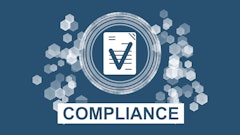
With the aim of bolstering security measures while ensuring the smooth flow of goods, the Customs-Trade Partnership Against Terrorism (CTPAT) program has introduced a new compliance framework. This initiative is poised to revolutionize the way businesses approach supply chain management, ultimately impacting both security and efficiency.
The CTPAT Trade Compliance Program comes as a response to emerging threats and challenges in the realm of international trade. We've talked about UFLPA in the past, and although at face value these look quite similar, there are differences to note. According to Marissa Brock, senior director of policy and government affairs at Sourcemap, a good way to think about the CTPAT Trade Compliance program V. the UFLPA is that membership in CTPAT can essentially serve as a "pre-check" for UFLPA compliance.

"The CTPAT Trade Compliance program is distinctly different from the UFLPA. First, CTPAT is a voluntary program. The Customs-Trade Partnership Against Terrorism is a program established by U.S. Customs and Border Protection (CBP) to strengthen international supply chains and improve U.S. border security. It was first established in the months following the 9/11 attacks. While CTPAT's Trade Compliance Program is voluntary, members do benefit from certain perks— for example, while membership in CTPAT does not exclude an importer from UFLPA-related detentions or Withhold Release Orders (WROs), a CTPAT member might experience a lower number of UFLPA-related detentions, because to maintain membership in the program they must conduct risk-based mapping to identify forced labor risks," says Brock.
The program underscores the importance of collaboration and information sharing among supply chain stakeholders and this collaborative approach fosters a network of interconnected security measures. Members of the CTPAT Trade Compliance program will have greater visibility into their end-to-end supply chain, crafting a transparency for the future of importing into the U.S. Brock explains that, provided that CBP can continue to offer benefits to CTPAT members in the form of less frequent detentions and expedited review time when detentions do occur, CTPAT membership may help U.S. companies identify and eliminate forced labor risk in their supply chains.
"Preventative risk-based mapping is a more effective approach to identifying risks before a detention occurs. Importers are often challenged to collect the requisite supporting documentation to contest a UFLPA detention in the time allowed, which can lead to a significant number of detentions re-exported or abandoned upon import," says Brock. "Stats related to imports that are immediately re-exported or abandoned are not currently included in CBP's publicly reported UFLPA detention statistics and likely account for a significant percentage of total UFLPA detentions."
UFLPA and CTPAT together mark a pivotal step forward in safeguarding international supply chains. By focusing on risk assessment and collaboration, CTPAT not only strengthens security but also streamlines operations. As a preventative approach to addressing the issues of forced labor, businesses volunteering position themselves as resilient players in the global market, capable of navigating security challenges while delivering goods with confidence.


























